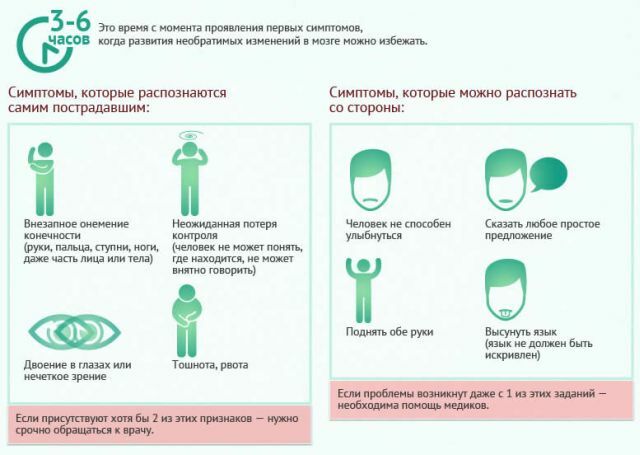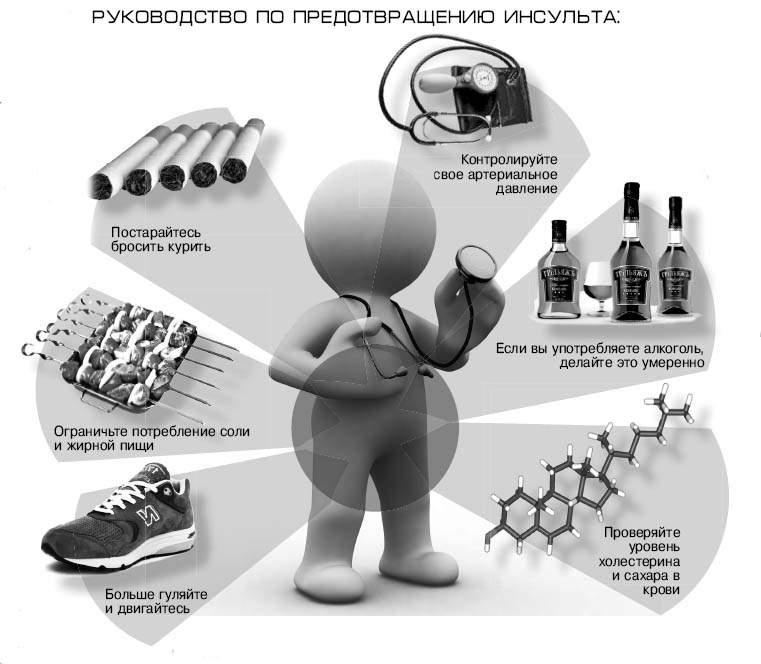Spinal stroke - is poor circulation in the spinal cord triggered by ischemia or hemorrhagic wearing character. Acute stage is preceded by a period marked state, acting as an early sign of crisis. However, they are often overlooked due to the fact that these features are typical for a large number of diseases.

Causes
The factors that trigger this condition, divided into the following groups:
- primary vascular lesions, which include abnormalities such as aneurysms and inflections, changes vascular provoked atherosclerosis, as well as damage due to trauma spine;
- secondary hemodynamic disorders associated with vascular pathologies due to compression of the vertebral column or tumor progression;
- inflammation of the spinal membranes;
- blood diseases.
Such a violation is a spinal stroke, the reasons may be as follows:
- thromboembolism;
- vascular rupture, spinal cord supply;
- spasm or pressure vessels.

In addition, there are a number of factors, the presence of which increases the likelihood of developing acute disorders of blood circulation in the brain as the brain and spinal cord. Among them are the bad habits such as smoking, sedentary lifestyle, obesity and various diseases such as hypertension and obesity.
symptoms
Although the disease is rare and is not more than 1% of the total number of cases acute CNS disorders of blood circulation, spinal stroke is characterized by a polymorphism in the manifestations symptoms.
ischemic type
Signs of ischemic stroke, spinal cord may have a strong similarity to radiculitis and kidney diseases, however diagnosis sometimes difficult. Harbingers of this state are:
- severe limb weakness;
- mild pain in muscles and joints;
- dysuria.

The acute stage is characterized by the following symptoms:
- severe weakness;
- dizziness and headache;
- nausea;
- urinary incontinence like. and stool;
- pain in the spine;
- loss of motor function and limb sensitivity.
The clinical picture varies considerably depending on whether, in what department ischemia occurred.
hemorrhagic type
The symptoms that distinguish a hemorrhage in the spinal cord ischemia are:
- girdle pain in the lumbar region;
- violation of pain sensitivity in the extremities;
- paralysis, which may be bilateral or unilateral nature.

Hemorrhage into the subarachnoid space there is a sharp pain spreading throughout the spine.
Treatment
The duration of treatment depends on the causes of spinal cord stroke. It may include medication and physical therapy, and in some cases resort to surgery.
Medication
Treatment of spinal stroke must be combined character and include the following types of drugs:
- anticoagulants prevent clots and reducing blood clotting;
- vasodilators;
- neuroprotective agents and substances improving metabolic processes;
- diuretics;
- substances that contribute to the restoration of muscle tone.

physiotherapy
In spinal stroke treatment are not only medicines but also physical therapy techniques. If the cause of this condition was due to compression of blood vessels osteoarthritis and other disorders of the spine traction applied methods prescribed wearing corsets.
operational
Surgical operations are shown in the cases where the violation of the circulation was triggered:
- trauma;
- swelling;
- hernia;
- vascular rupture.
rehabilitation
To restore the mobility of patients suffered a spinal stroke prescribed:
- massage;
- electrostimulation;
- magnetic field therapy;
- electrophoresis;
- paraffin and carbon dioxide baths;
- acupuncture.

A separate role for exercise and physical therapy. Complex is administered to a patient should include breathing exercises, active and passive motion. Without their help eliminate the consequences of poor circulation in the spinal cord and the return to normal life will not work.
rehabilitation process could drag on for a year or more. Aside from the physical effects show a psychologist.
preventive
For the prevention of circulatory disorders in the spinal cord is important to maintain an active lifestyle and individual attention given to strengthening the back muscles, prevent the development of diseases such as osteochondrosis and intervertebral hernia. Great benefit in the prevention of this disease brings pedestrian walking
It is extremely important to avoid back injuries and damage to the spinal column. When the hard work necessary to properly distribute the load. Lifting weights should be carried out primarily at the expense of the feet.
An important element in the prevention of stroke as spinal and brain is the regular monitoring of blood pressure and taking appropriate measures when identifying cases of hypertension.
Furthermore, it should comply with the recommendation, aimed at the general improvement of the body. Measures such as a balanced diet, avoiding harmful habits and regular medical examinations will help to maintain health.



